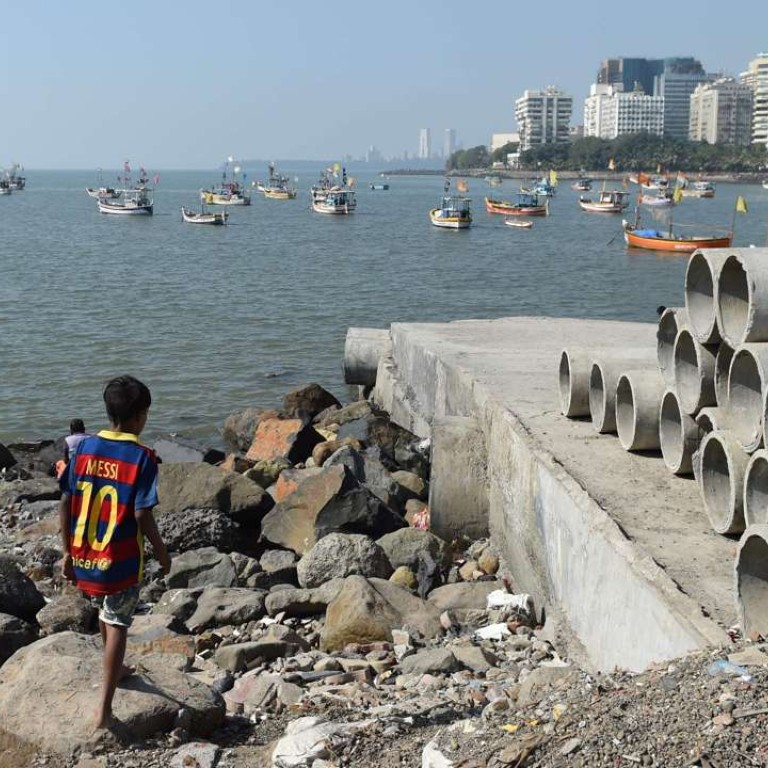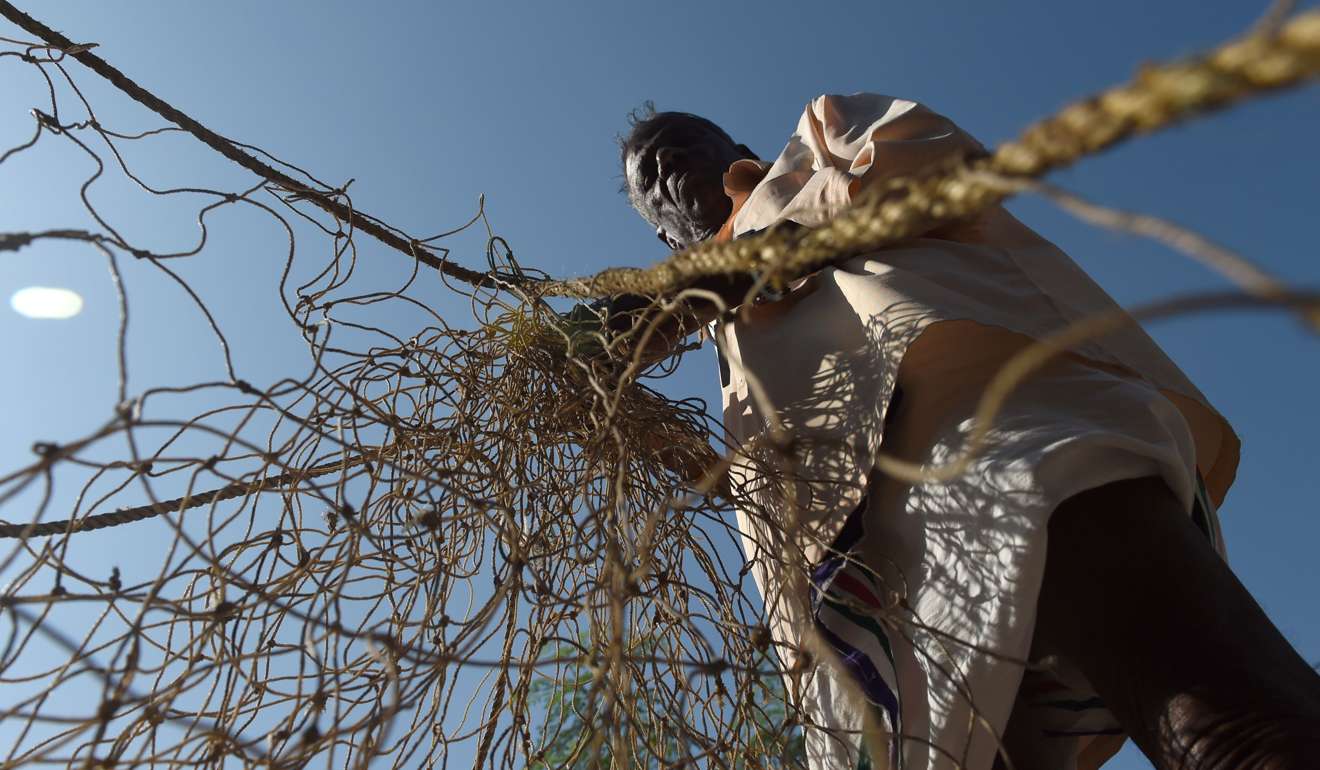
World’s tallest statue planned for Mumbai but traditional fishing communities claim it poses grave threat to their very existence
Critics insist 190-metre tribute to Hindu warrior king is a gross waste of money which would be better spent on improving health, education and infrastructure in the teeming metropolis of more than 20 million people
A fitting tribute to a local legend or a grotesque misuse of money? The decision to build the world’s tallest statue just off Mumbai’s coast has divided the city.
But within the traditional Koli community, which depends on fishing for livelihoods, some people are concerned about the construction and the threat it poses to their centuries-old existence.
India will spend 36 billion rupees (US$530 million) on the controversial memorial to 17th-century Hindu warrior king Chhatrapati Shivaji. Prime Minister Narendra Modi laid the foundation stone in December.
At 190 metres, it will be twice the height of America’s Statue of Liberty and almost 40 metres taller than the world’s current tallest memorial – a statue of Buddha in China.
It’s going to affect the food base of the city, it’s going to affect the economy. There is going to be a huge amount of damage
The Koli fishing community, Mumbai’s original inhabitants and whose goddess “Mumbadevi” lends her name to the city, claims the decision to build it on a rocky outcrop a couple of kilometres off the coast will sound the death knell for its traditional way of life.
“The breeding ground for fish will be completely destroyed,” Krishna Tandel said, unfurling a net at Machhimar Nagar bay, which is tucked behind the high-rises of Mumbai’s southern financial district.
The project has divided India’s commercial capital and highlights a political obsession with statues in the country as parties seek to appeal to regional identities with ever greater effigies of historical figures.
Supporters claim the memorial is a fitting tribute to someone many locals consider a hero of Maharashtra state, of which Mumbai is the capital. Shivaji fought the Muslim Mughal empire, is revered by the Maratha caste and trumpeted by Hindu nationalist politicians.
Opponents insist it is a gross waste of money which would be better spent on improving health, education and infrastructure in the teeming metropolis of more than 20 million people.
A petition on the change.org website opposing the bronze statue, which will depict Shivaji brandishing a sword while charging on a horse, has received almost 43,000 signatures.

Some 2,000 fishermen, many of whom live in shanties surrounding Machhimar Nagar, operate 350 boats out of the picturesque cove, catching fish to sell at markets and feed their families.
Residents claim disruption caused by construction will decimate their fishing stocks – including pomfret, Bombay mackerel, seer fish, prawns, and crabs – while heavy traffic ferrying tourists from three terminals will block access to the sea and disrupt wave patterns.
“We have been fishing for generations. It is our business and now our livelihoods are at stake,” 32-year-old Tandel said, demanding the statue be built on land.
Environmentalists agree the project, due to be completed by 2021, will cause immense harm to a vibrant marine ecosystem.
“There’s a huge diversity of fish, fauna and invertebrates there. Fish catches, sewage, and tidal currents will change,” wildlife biologist Anand Pendharkar said. “It’s going to affect the food base of the city, it’s going to affect the economy. There is going to be a huge amount of damage.”

Critics have questioned why Mumbai needs such a lavish statute when the city already has several smaller Shivaji memorials. The city’s airport, main train station and museum are named after the Hindu hero while there is also a Shivaji Park.
IndiaSpend, a non-profit data journalism website, estimated a micro-irrigation project could provide water to thousands of farmers in the drought-prone state for the cost of building the statue. For the same amount, dozens of decaying Shivaji-era forts could be restored instead, it said.
Everyone wants to take credit. This identity politics has become so vulgar now that everybody wants to have these statues
The Bharatiya Janata Party-led Maharashtra government, in coalition with Shiv Sena, which means “Shivaji’s Army”, dismissed environmental concerns and said the project will draw 10,000 visitors every day.
Shaina NC, a spokeswoman for the ruling Bharatiya Janata Party, claimed it will be an “iconic” memorial akin to the Statue of Liberty that will make its money back through tourism. Shiv Sena spokesman Sanjay Raut said the sea is the best site because Shivaji created India’s first navy.
The BJP government in neighbouring Gujarat is also building a 182-metre statue to Vallabhbhai Patel, a former Indian statesmen who was one of the senior figures in the country’s independence movement and an icon of the Congress Party.
Analysts suggest political parties aim to build ever more impressive statues to claim popular historical figures as their own. The symbolism this creates translates into votes in India’s identity-based politics.
“Everyone wants to take credit. This identity politics has become so vulgar now that everybody wants to have these statues,” political commentator Kumar Ketkar said.
The BJP’s Shaina said 400 Koli families will be “rehabilitated at the earliest” but that’s little consolation to the residents of Machhimar Nagar who just want their culture to continue.
“Even if the government provides us with other jobs, it won’t give us the recognition we deserve,” Tandel said. “It’s our way of life and it should go on.”

.png?itok=arIb17P0)